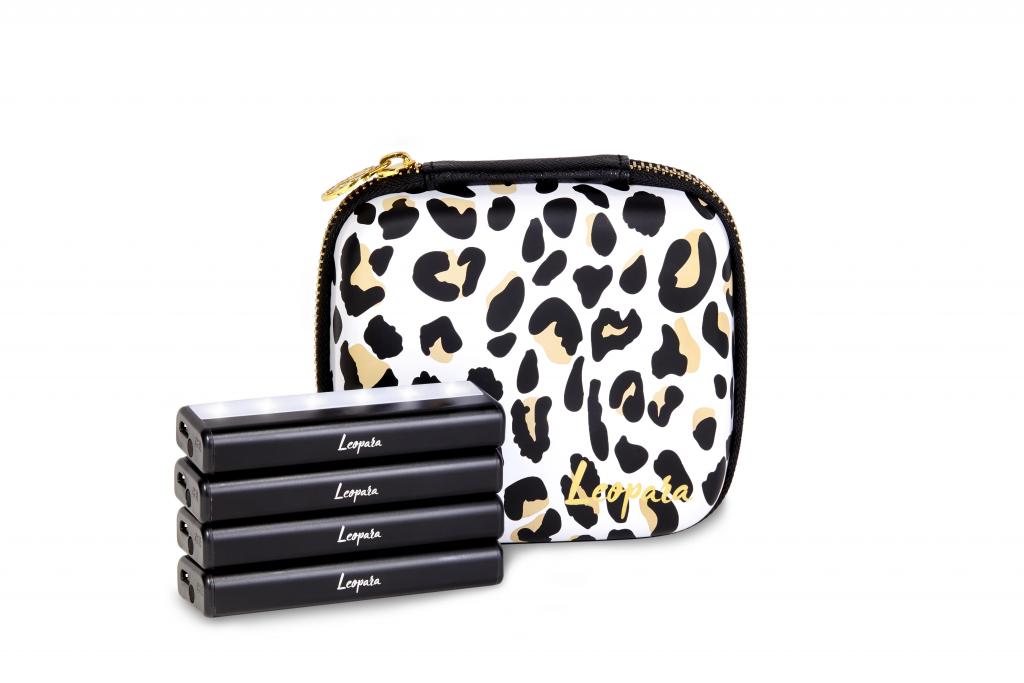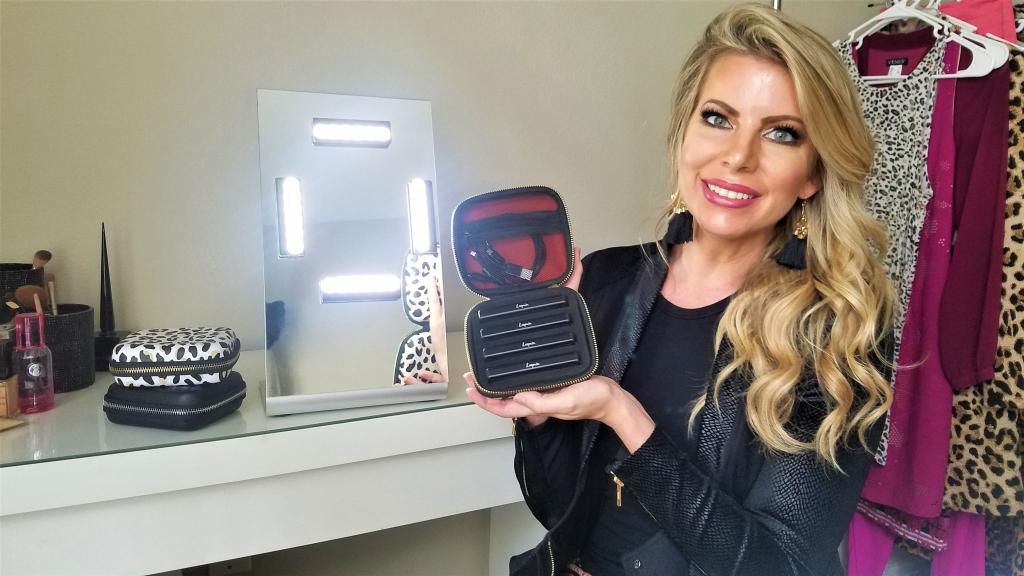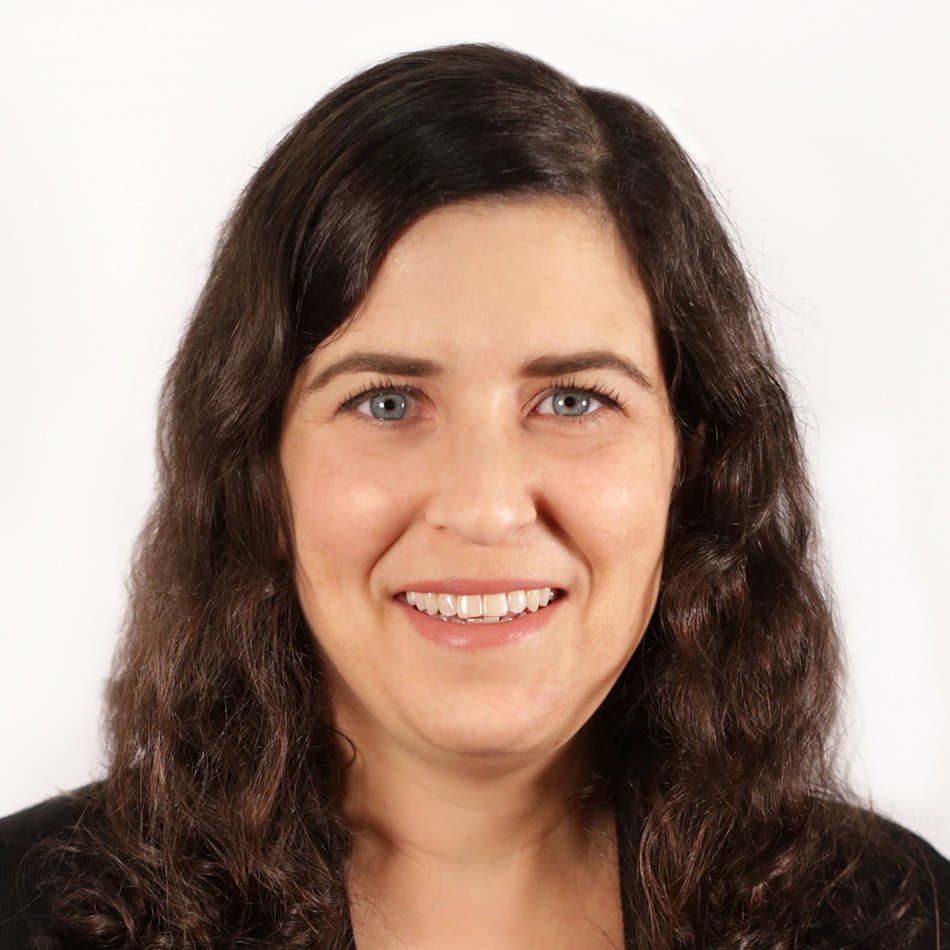
Leopara Brings The Light To Makeup Wearers No Matter Where They Go
While readying herself to go out during a weekend jaunt to Las Vegas in 2015, Rachel Vicknair became annoyed that the poor lighting in her hotel room made it difficult to put on makeup properly.
“There were shadows and a yellowish color. Makeup is supposed to give you confidence, but it was terrible,” she recounts. “I was looking at myself and thinking, ‘There’s no excuse why it has to be this way.’ I turned to my boyfriend and said, ‘Why doesn’t someone make a light that you can travel with that turns any mirror into the perfect mirror?’”
Three years later, that someone is Vicknair. She’s launching Leopara, a brand centered upon a compact lighting system that attaches to mirrors and brightens faces evenly. In a segment dominated by professional tripods for makeup artists, cellphone ring lights for influencers and countertop options for laypeople at home, it provides a transportable solution for on-the-go women to easily access illumination mimicking natural light no matter the setting.

“Probably the most important step in makeup application people don’t realize is the lighting,” says Vicknair, a former global education and training manager at skincare device company NuFace whose career has bridged the beauty and entertainment industries. “I know how it feels when you have beautiful lighting, and everything is illuminated. I want to replicate that feeling for everybody. I can turn your office or hotel room into a gorgeous vanity, and you’re going to feel amazing doing your makeup there.”
Releasing an electronic product isn’t as easy as injecting another lipstick into the makeup milieu, and it’s been a bumpy road to bring Leopara to market. In total, Vicknair estimates she’s poured $60,000 to get the brand’s lighting system available for retail, but not in a single chunk. The Los Angeles resident began with $15,000 she had from selling a property in New Orleans, her hometown, and later accumulated funds from a successful Kickstarter campaign and winning the game show “Beat Shazam” that she invested in the brand. She’s now selling items on used clothing marketplace Poshmark for money to pay bills.
“I know how it feels when you have beautiful lighting, and everything is illuminated. I want to replicate that feeling for everybody. I can turn your office or hotel room into a gorgeous vanity, and you’re going to feel amazing doing your makeup there.”
“Lack of cash is what kills a business, and it’s tough, especially when you have to manufacture a product,” says Vicknair. “I get overwhelmed sometimes thinking about the amount of work I’ve done and mistakes I’ve had to learn from. On the outside, people see what you are doing, and they are impressed and proud. They think you’re going to make millions, but the reality is it’s really hard to get there.”
Two of the hardships Vicknair experienced in developing Leopara involved potential partnerships. The first crumbled because she sought a larger cut of the company than the potential partner was willing to dole out and the second because she believed her possible partner wasn’t as passionate about the project as her.

Discussing the first deal, Vicknair shares, “I have a vision for this and what I want it to be and, if I got 15% of if, what’s to stop them from making a cheap product that’s going to last you a couple of uses, and it’s done. So, I walked away. Actually, I countered, and they said they would only do the deal offered. It was heartbreaking.”
After the second deal fell flat, Vicknair decided she had to make the Leopara leap. She’d previously had a goal of introducing a snazzier product that’s akin to a virtual makeup assistant. The device would hook up to Bluetooth, guide makeup application with tutorials, keep track of cosmetics usage, and reorder products through e-commerce, to outline a few of its functionalities. The snazzier version required additional money and time, both of which Vicknair was running out of.
“When you think of leopard print and the word leopard, they’re bold and powerful, and convey where I want the brand to sit. There are so many obstacles that women face when they’re trying to get ready, and I want to break down those obstacles for them.”
“I’m a consummate perfectionist, but I thought, ‘I have to put this out there.’ If I spend any more time chasing investors, someone else is going to do it, and I’m going to be crushed,” she says. “It’s not the grandeur that I want for it, but it’s a start.”
The debut version of Leopara incorporates tiny suction cups on the backs of four wireless LED panels that stick to mirrors without damaging them. For $89, the four lighting panels are packaged with a portable carry case and four-in-one USB charging cord. A charge is expected to last eight to 10 makeup sessions. The next model will likely include a dimmer and charging station inside the carry case.

A leopard print obsessive, Vicknair named her brand after the print as well as the fierce animal that inspires it. “When you think of leopard print and the word leopard, they’re bold and powerful, and convey where I want the brand to sit. There are so many obstacles that women face when they’re trying to get ready, and I want to break down those obstacles for them,” she says. “Also, I wanted a brand that could stand alone beyond lighting. I don’t want to be a lighting company. I want to be a lifestyle company.”
For its initial year in business, Vicknair hopes to sell 15,000 lighting system units, an amount that would propel Leopara’s sales to in excess of $1 million. The brand has entered the fray on Amazon, a platform Vicknair says is crucial for exposure. She plans to sell Leopara’s lighting system only on it for around six months. Further out, Sephora is a retail target. Regardless of Leopara’s future distribution, one thing’s for sure: Vicknair’s going to look great on her next trip to Las Vegas.





Leave a Reply
You must be logged in to post a comment.